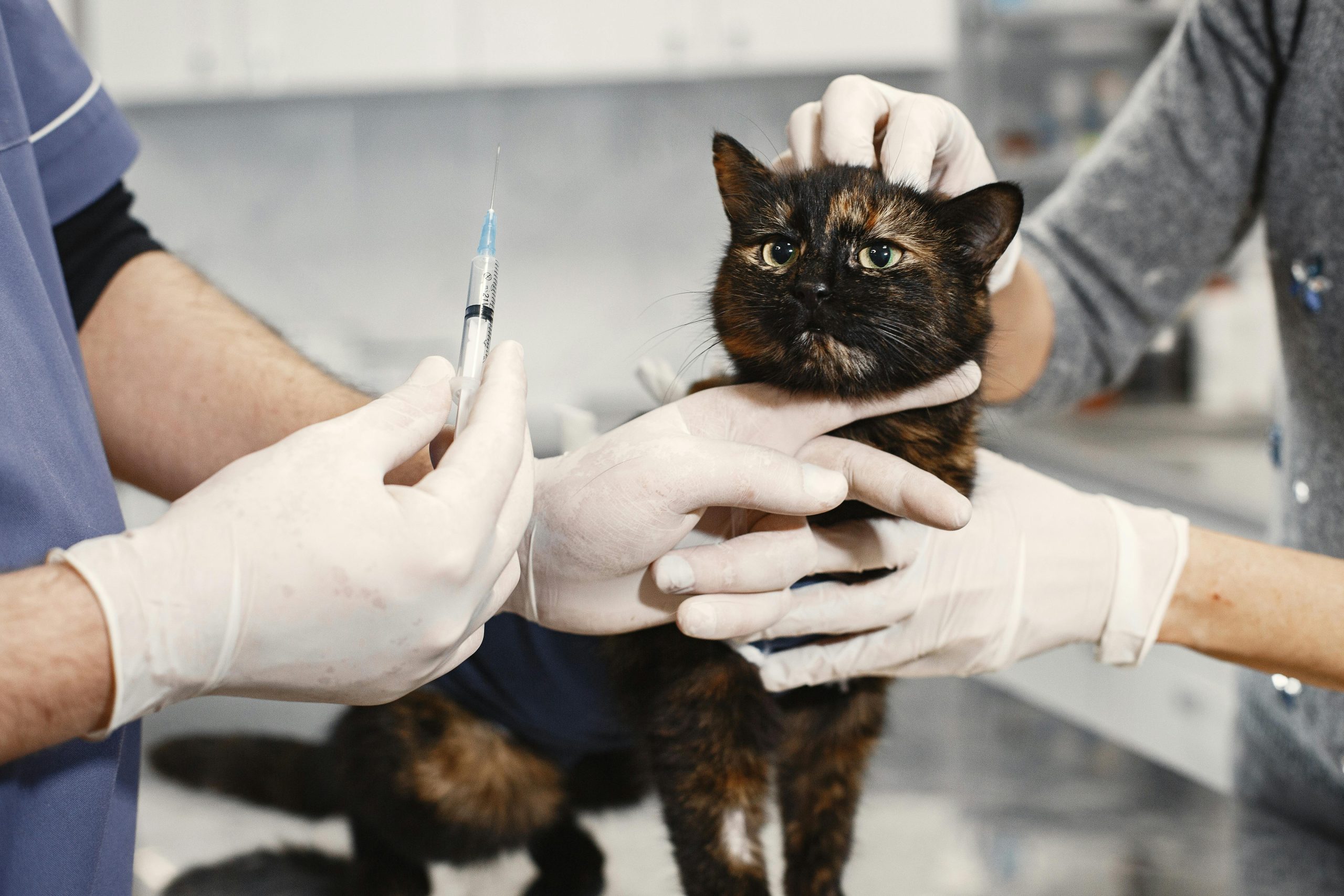Diabetes in Animals: Causes, Symptoms and Treatment
Diabetes in pets is a chronic condition that affects their ability to regulate blood sugar levels. Like in humans, diabetes occurs when the body doesn't produce enough insulin or cannot use insulin effectively. Insulin is a hormone responsible for controlling glucose levels in the bloodstream, which is crucial for energy production. When this balance is disrupted, it leads to elevated blood sugar levels, which can have severe consequences for an animal's health. Pets with diabetes require lifelong care and management to maintain a good quality of life.

What Types of Diabetes Can Animals Develop? Causes of Diabetes
Animals can develop two main types of diabetes: Type 1 and Type 2.
Type 1 diabetes is characterized by a lack of insulin production, often due to an autoimmune response that destroys insulin-producing cells in the pancreas. This type is more common in dogs.
Type 2 diabetes occurs when the body produces insulin, but the cells become resistant to it, a condition often linked to obesity and sedentary lifestyles. This form of diabetes is more frequently seen in cats.
The causes of diabetes in animals can vary widely. Genetics plays a significant role, with certain breeds predisposed to the condition. Environmental factors such as diet, obesity, and lack of exercise can contribute to the development of diabetes, particularly Type 2. Other causes may include chronic pancreatitis, hormonal imbalances (such as Cushing's disease in dogs), or the prolonged use of certain medications, like steroids.
What Kind of Animals Are at Risk, and at What Age?
While diabetes can affect almost any animal, it is most commonly diagnosed in cats and dogs. Older pets are more prone to diabetes, with most cases occurring in middle-aged to senior animals-typically between 7 and 10 years of age. Female dogs are more likely to develop diabetes than males, whereas in cats, male cats, particularly neutered ones, are at a higher risk.
The breed also influences susceptibility.
Dog breeds that are more prone to diabetes are the following:
- Miniature Schnauzers;
- Poodles;
- Dachshunds.
Cat breeds that are more prone to diabetes are the following:
- Burmese cats.
Other animals, like horses, can also develop a form of diabetes, often related to insulin resistance, which is similar to Type 2 diabetes in humans.
Which Health Factors May Increase the Risk of Developing Diabetes?
Several health factors can increase the risk of diabetes in pets:
- Obesity is one of the most significant risk factors, particularly in cats, where excess weight contributes to insulin resistance.
- Chronic inflammation of the pancreas (pancreatitis) can damage the insulin-producing cells, leading to diabetes.
- Hormonal disorders, such as hyperadrenocorticism (Cushing's disease) or hypothyroidism, may also predispose pets to diabetes.
- The prolonged use of medications like corticosteroids can interfere with insulin action, increasing the risk.
- Age is another factor, as older pets are more likely to develop diabetes due to a natural decline in insulin sensitivity and the body's ability to produce insulin.

What Are the Signs of Diabetes in Pets?
Diabetes in pets often presents with a range of symptoms that may develop gradually.
Common signs include increased thirst and urination as the body attempts to rid itself of excess glucose. Pets may also experience weight loss despite a normal or increased appetite because their bodies cannot effectively use the glucose in their food. Lethargy, cloudy eyes (particularly in dogs), and poor coat condition are also possible signs.
In severe cases, pets may exhibit signs of diabetic ketoacidosis, a life-threatening condition characterized by vomiting, weakness, rapid breathing, and dehydration.
How Is Diabetes Diagnosed and Treated?
Diagnosis of diabetes in pets involves a combination of clinical signs and laboratory tests. A veterinarian will typically conduct a physical examination and may recommend blood tests and urine analysis to measure glucose levels. Persistently high blood sugar levels and the presence of glucose in the urine are strong indicators of diabetes.
Treatment aims to regulate blood sugar levels and prevent complications. The Veterinary Health Center from the University of Missouri states that your pet will need lifelong insulin injections for Type 1 diabetes, as oral medications are ineffective. Insulin is the only current treatment option, as alternatives like insulin pumps or transplants are not yet viable for pets.
NPH insulin is the most common type used in dogs. Cats, depending on their condition, may also require insulin or may respond to dietary changes alone. Other types, like synthetic insulins (glargine, detemir), are used when NPH is ineffective but are more expensive. Insulin should be appropriately stored and replaced every 1-3 months.
Injections are typically given twice daily, ideally 15-30 minutes before meals. A high-fiber, low-fat diet helps regulate blood sugar and prevent obesity. Avoid high-carb treats, opting for low-carb options like vegetables. Consistent exercise, like daily walks, improves insulin use and helps maintain a healthy weight.
Preventing infections is crucial, as they can disrupt insulin use. Diabetic dogs are prone to urinary tract infections and dental issues. Regular monitoring of blood glucose levels and adjustments to insulin dosage are essential.
How to Care for Diabetic Animals?
Caring for a diabetic pet requires commitment and consistency. Maintaining a stable routine for feeding and insulin administration is crucial. A balanced diet, often high in protein and low in carbohydrates, can help manage blood sugar levels, particularly in cats. Regular exercise is beneficial for weight management and overall health but should be done in moderation to avoid sudden drops in blood sugar.
Regular check-ups with a veterinarian are vital to monitor the pet's condition and adjust treatment as needed. Home monitoring of glucose levels may also be recommended, allowing for early detection of any fluctuations. Stress management is essential, as stress can impact blood glucose levels in pets.
What Is the Life Expectancy in Diabetic Animals?
The life expectancy of diabetic animals varies depending on the timely diagnosis, quality of care, and any concurrent health conditions. With proper management, many diabetic pets can live an average life span. Early detection and consistent management of diabetes can help prevent complications, such as cataracts, nerve damage, or kidney disease. Owners who are vigilant and proactive in caring for their diabetic pets can ensure that their furry companions enjoy a happy, healthy life.

















